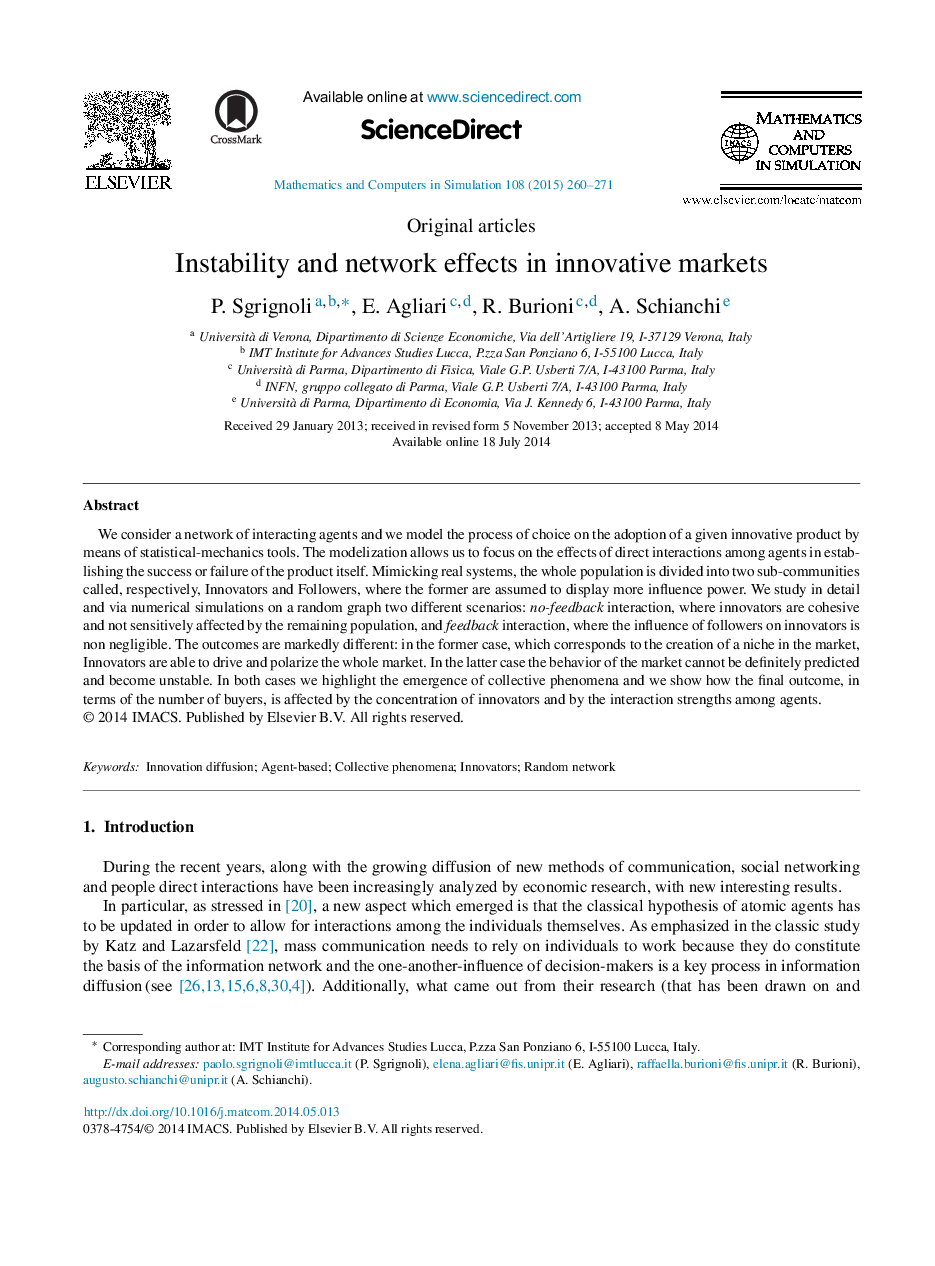| Article ID | Journal | Published Year | Pages | File Type |
|---|---|---|---|---|
| 1139433 | Mathematics and Computers in Simulation | 2015 | 12 Pages |
Abstract
We consider a network of interacting agents and we model the process of choice on the adoption of a given innovative product by means of statistical-mechanics tools. The modelization allows us to focus on the effects of direct interactions among agents in establishing the success or failure of the product itself. Mimicking real systems, the whole population is divided into two sub-communities called, respectively, Innovators and Followers, where the former are assumed to display more influence power. We study in detail and via numerical simulations on a random graph two different scenarios: no-feedback interaction, where innovators are cohesive and not sensitively affected by the remaining population, and feedback interaction, where the influence of followers on innovators is non negligible. The outcomes are markedly different: in the former case, which corresponds to the creation of a niche in the market, Innovators are able to drive and polarize the whole market. In the latter case the behavior of the market cannot be definitely predicted and become unstable. In both cases we highlight the emergence of collective phenomena and we show how the final outcome, in terms of the number of buyers, is affected by the concentration of innovators and by the interaction strengths among agents.
Related Topics
Physical Sciences and Engineering
Engineering
Control and Systems Engineering
Authors
P. Sgrignoli, E. Agliari, R. Burioni, A. Schianchi,
